Gravel bike vs mountain bike: Understanding the differences
Both bikes are meant to go off-road, but they also have some major differences
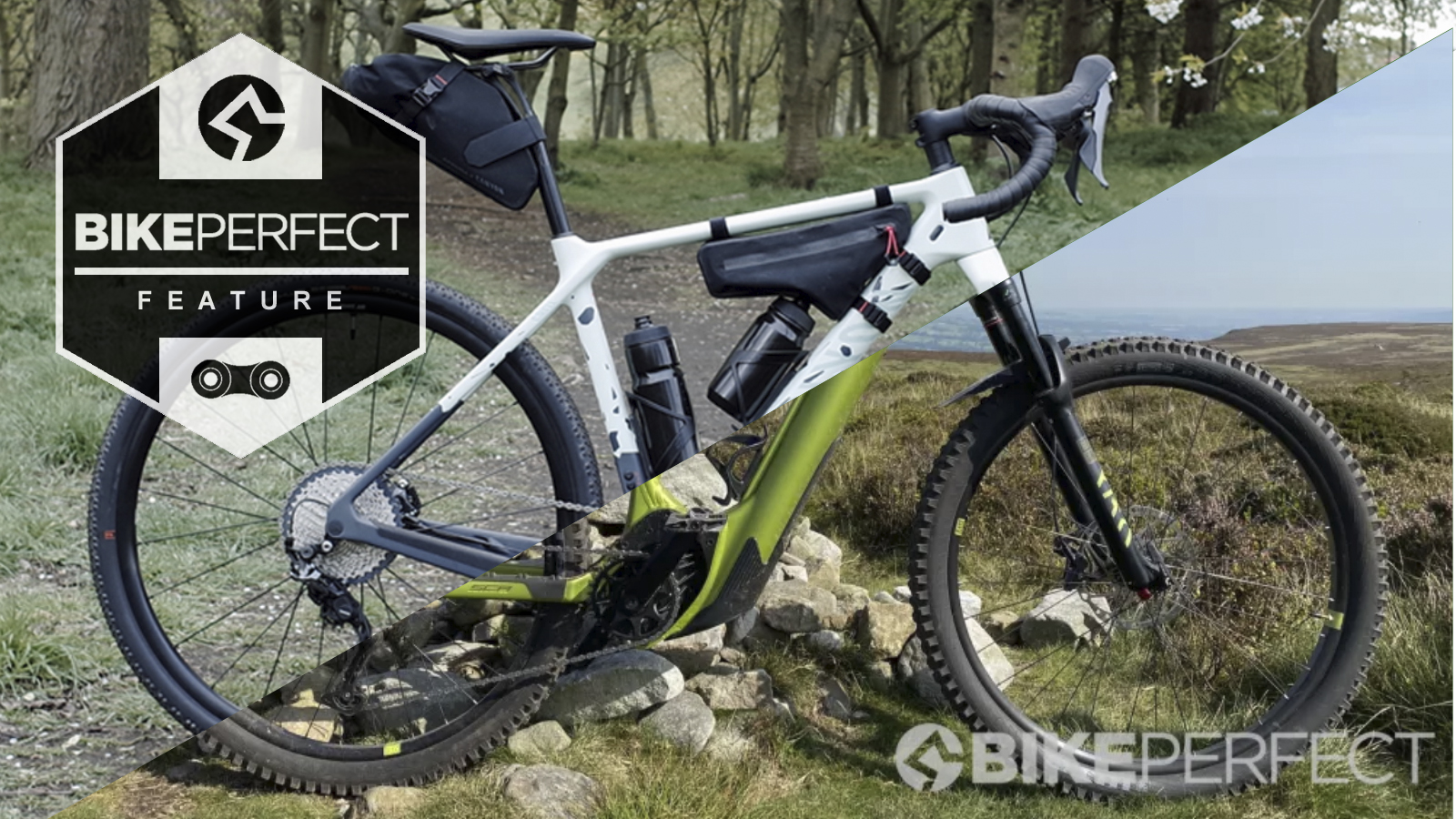
What is the difference between a gravel bike and a mountain bike? This can be difficult to explain to a non-cyclist, as both bike types include many of the same features. While the best gravel bikes look quite different from the best mountain bikes, it’s still possible to take a gravel bike on a mountain bike trail, and vice versa.
‘Gravel cycling’ is truly an undefined term — it can really mean anything from rough pavement and rock chunks, to sandy dirt and singletrack trails. The bike industry has really committed to this ‘new’ idea of gravel riding, following the discipline’s explosion in popularity during the last decade. A gravel bike isn’t a whole lot different from the options we already had — namely the best hardtail mountain bikes and cyclocross bikes — but there are a few key differences that give the gravel bike its name. Before we dive into those details, let’s look at the broader purpose of gravel bikes and mountain bikes.
What is the difference between a gravel bike and a mountain bike?
Why trust BikePerfect
Gravel bikes are meant for all sorts of riding, both off-road and on, from dirt trails to gravel roads and the stretches of tarmac in between that piece a route together. Again, it’s hard to define ‘gravel,’ but we know one thing for sure: gravel bikes are not mountain bikes.
Mountain bikes are made for off-road riding. From the best mountain bikes for beginners for taking on entry-level trails, to the best lightweight mountain bikes designed to take on cross-country racing and the best downhill MTBs to throw down a World Cup course.
With suspension, flat bars and disc brakes, mountain bikes are capable of tackling a wider variety of terrain compared to gravel bikes. While gravel bikes can handle some off-road, they aren’t as well-suited to rocky descents or steep, root-laden trails due to their narrower tires and lack of suspension.
That said, gravel bikes are fast. With lightly treaded tires pumped up to 40psi, most gravel bikes can roll almost as fast as a road bike. Their frames are light and agile, and the road feel is very similar to a road bike. Drop bars and close-to-road-frame geometry help create this illusion; and it’s a fun feeling when you turn onto a gnarly gravel road and still have most of the grip of an off-road bike.
When it comes to racing, mountain biking is much more established than gravel racing, which is still in its unofficial, unsanctioned, unwritten-rule-filled infancy. Mountain bike racing has been around for decades, and includes both men’s and women’s racing in multiple forms, including Short Track Cross-Country (STXC), Cross-country (XCO), Enduro and Downhill.
Gravel racing, on the other hand, has more of an ultra-endurance theme. The most popular gravel races around the world are typically 5-10 hours long, on courses of up to 200 miles including 10,000+ ft. of climbing. The best gravel racers in the world, at least for now, seem to be former WorldTour pros, with Laurens ten Dam, Peter Stetina and Ted King all seeing major success in gravel racing.
Aside from racing, the popularity of gravel riding took off like a rocket just a few years ago. Millions of cyclists around the world suddenly started shopping for gravel bikes, but many didn’t really know what they were looking for. Here are the similarities and differences between gravel bikes and mountain bikes.
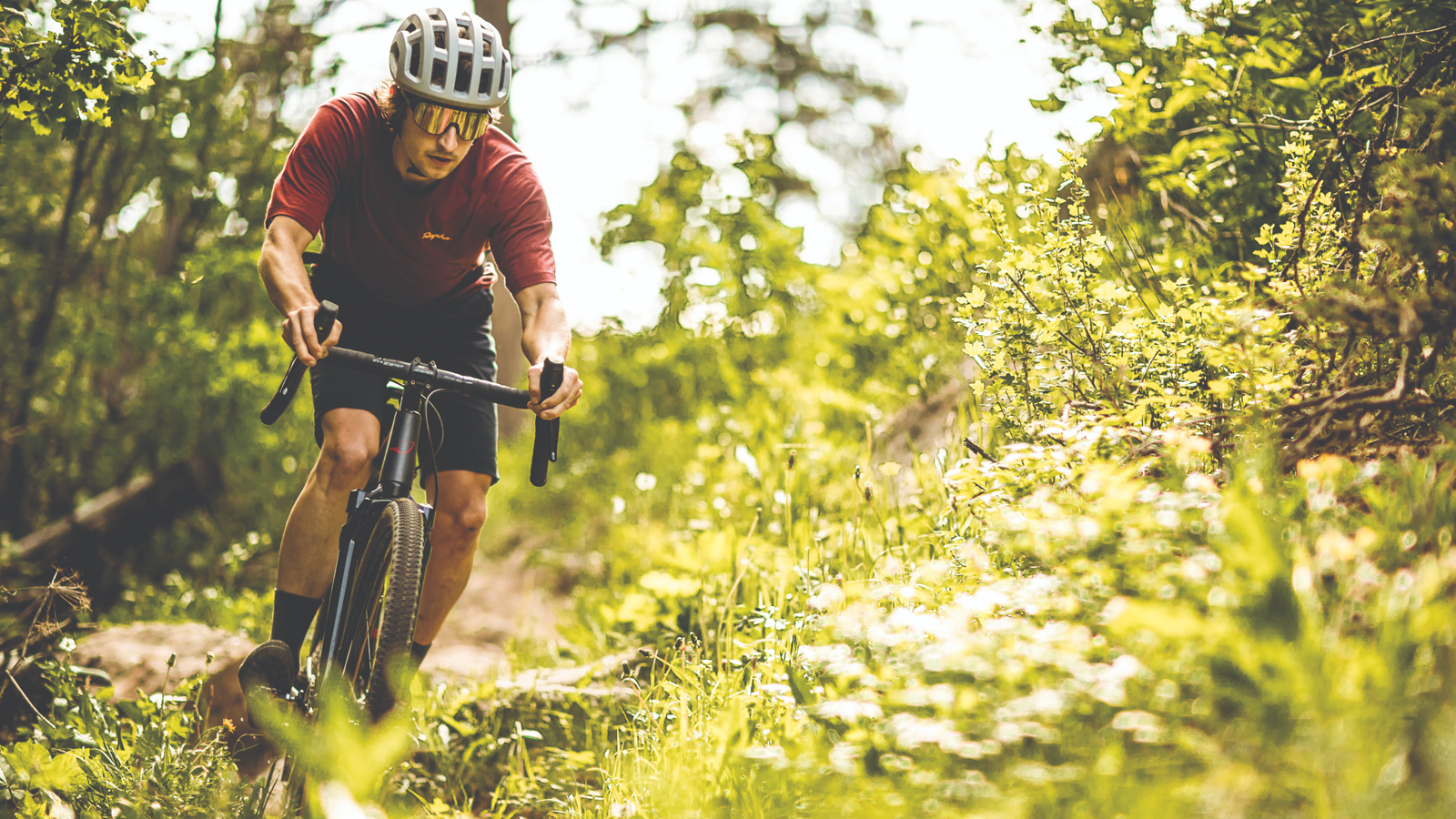
Wheels and tires
For many, the defining characteristic of gravel bikes compared to road bikes is wider tire clearance, allowing up to 50mm of rubber. With this extra clearance, gravel bikes work with a variety of tires including slicks, file treads, knobbly tires, and just about everything in between. Elite gravel racers will often change their tires based on the terrain and technicality of a race course.
With all that in mind, mountain bike tires are in another league compared to the best gravel tires. Designed to tackle bumpy trails, roots and ruts, and bumpy rock sections, mountain bike tires are significantly wider — upwards of 2.2in — and often use more pronounced treads for mud traction. Additionally, mountain bike tires are much thicker and can include puncture-protected sidewalls.
While a gravel bike with wide, knobbly tires looks capable of tackling a singletrack trail, it is much less protected against flats than a thick mountain bike tire.

Gears and brakes
Believe it or not, there’s actually a lot of similarities between gravel bikes and mountain bikes when it comes to gearing and brakes. Modern gravel bikes have begun to incorporate more and more ‘mountain bike technology,’ such as 1x drivetrains, wide-range cassettes, and powerful disc brakes.
There are tons of gearing options for both gravel bikes and mountain bikes, and you can find setups including one, two, or occasionally even three front chainrings for either kind of bike. The gravel world is still pretty split when it comes to 1x or 2x setups, and it usually comes down to where you’re riding. If you live in the flatlands of Iowa, you probably don’t need a 2x setup with a huge cassette. But if you enjoy doing repeats on 12 percent gravel climbs, you’ll want as big of a range as possible.
Mountain bikes almost exclusively come with a 1x setup, as a number of drivetrain manufacturers have been able to invent a huge cassette range that will give you the right gear no matter if you're going 8km/h or 35. Donning the name ‘dinner plate’ due to their sheer size, cassettes such as the SRAM XG-1295 Eagle range from 10t to 50t.
While road riders quibble about rim versus disc brakes, hydraulic disc brakes are the most preferred option off-road. Keeping the braking surface out the way of dirt and grime, they offer far superior power, modulation and durability out on the trail.
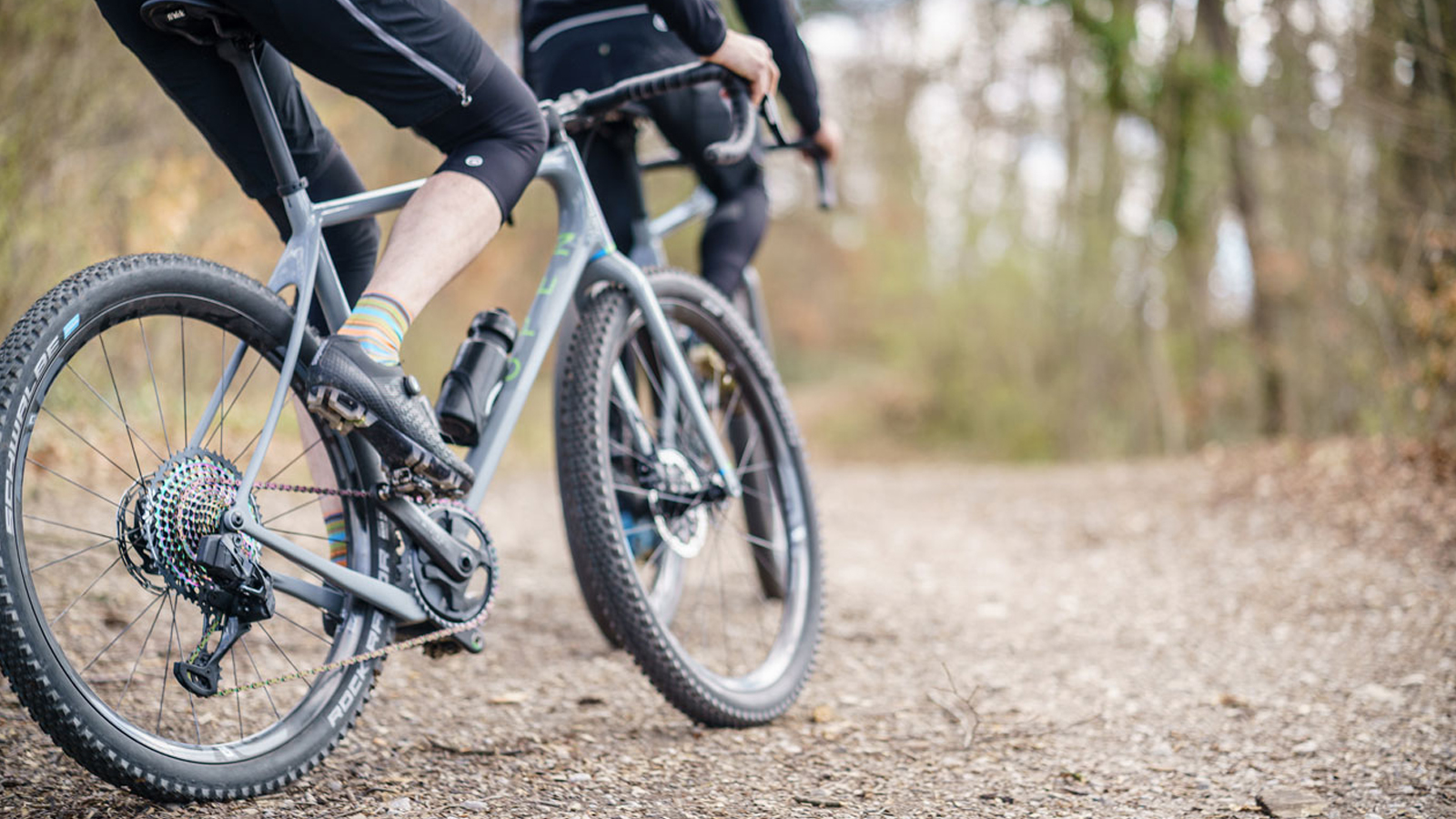
Frame geometry
Gravel bikes are designed much like road bikes, with a classic riding position with a nod to aerodynamics and comfort — it’s not upright like a beach cruiser, nor slammed down like a time trial bike. In general, gravel bikes are shorter than mountain bikes, which have slacker head angles and longer wheelbases.
Compared to road bikes, gravel bikes have more relaxed geometry, which improves overall comfort and stability. This is key for longer adventure rides and the most popular gravel races which can last up to half a day.
Mountain bikes are built for technical terrain, such as steep descents and tight turns. The longer reach values present in mountain bikes make them more stable at speed, especially on rough terrain. The slacker head angle helps keep the rider’s center of gravity balanced down steep descents, while the short stems and wide handlebars improve leverage and handling. The flat handlebars (more on this below) on mountain bikes also improve grip and stability when landing jumps or negotiating technical terrain where extra leverage is beneficial.
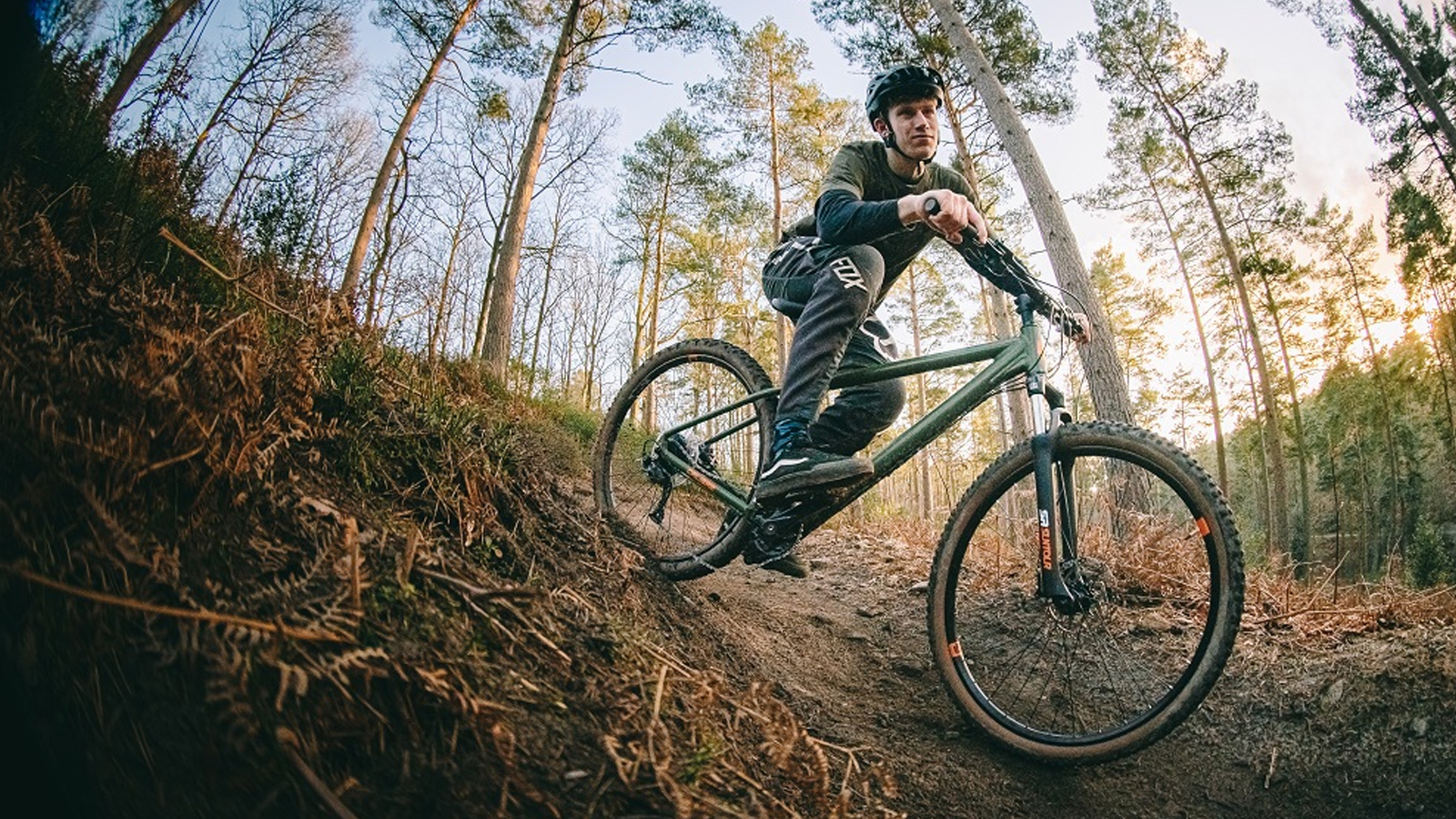
Suspension
A typical gravel bike doesn’t have suspension, although some manufacturers have designed gravel bikes with it. However, even the gravel bikes with suspension have a much lower travel than mountain bikes, at about 20-30mm compared to a mountain bike’s 100-170mm of travel.
Mountain bikes are typically broken up into two categories: hardtail and full suspension. Hardtail mountain bikes are mountain bikes with only front suspension. These bikes are cheaper, easier to maintain and their lightweight frames are ideal for cross-country and short track racing.
Full suspension mountain bikes have suspension in both the front and rear, which improves overall comfort, especially over technical terrain. This style of mountain bike is significantly more expensive than hardtail options, and much heavier overall. Full suspension mountain bikes are best for downhill racing, and many include a massive 200mm+ range of travel. That said, developments in technology, materials and manufacturing have meant best full-suspension mountain bikes are now hugely popular for racing the increasingly demanding cross-country courses.
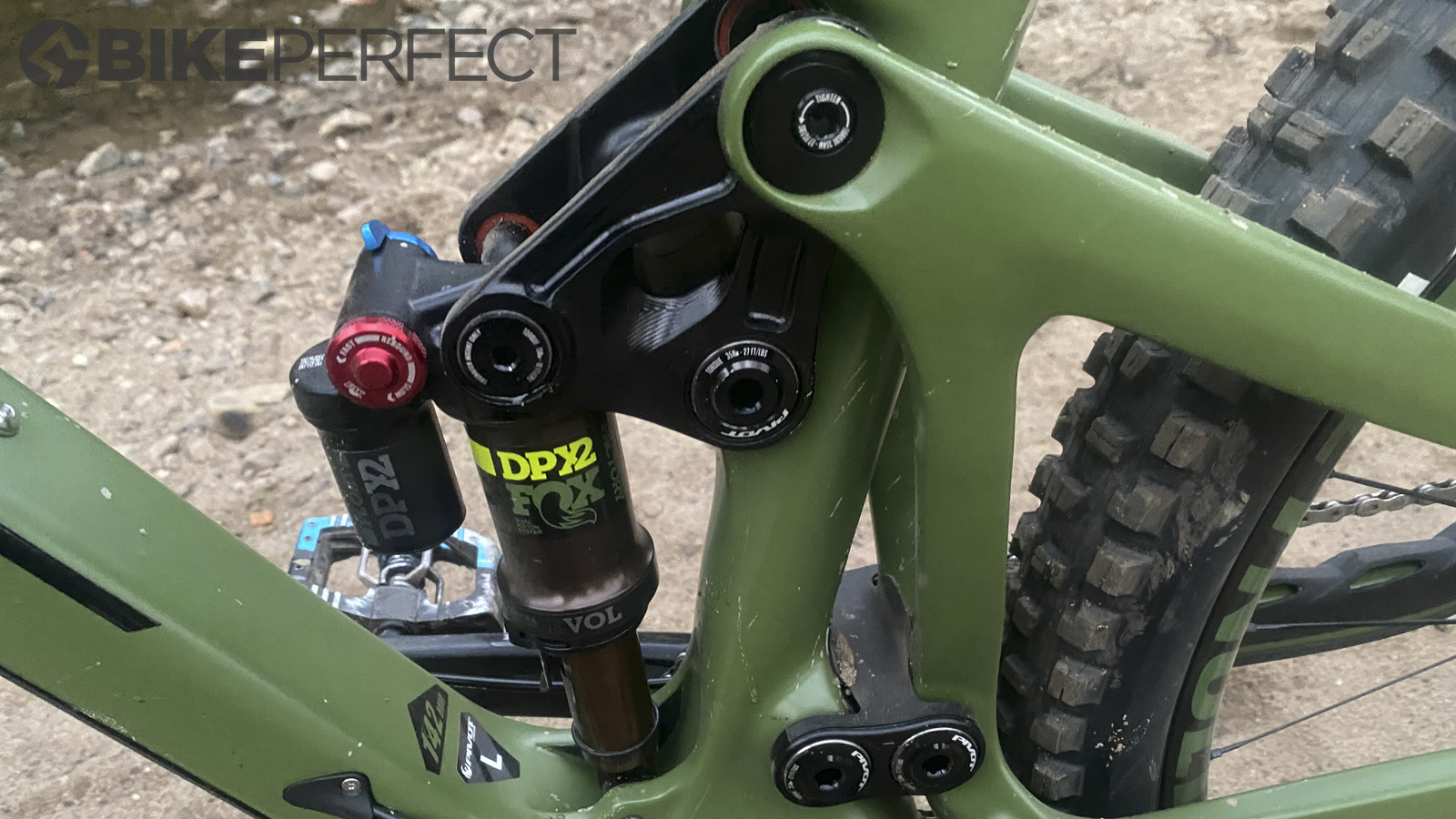
Handlebars
One of the biggest differences between gravel bikes and mountain bikes are their handlebars: gravel bikes mostly use drop bars (with a few exceptions), while mountain bikes use flat bars. This significantly affects the handling of each bike, as well as the rider’s position and comfort during long days in the saddle.
Gravel bikes and their drop bars create a front-end feel that is very similar to a road bike – the handlebar style is the same, in fact. Riders have three main hand positions to choose from on drop bars: the hoods, tops, or drops. Most riders spend the majority of their ride time on the hoods, where they can easily reach the brake and shifter levers. On the tops, their hands are much further from the brakes and shifters, so they’ll have to change their hand position in order to brake or shift. Drops give the most secure hand position and easiest access to brake levers so are used in descents, they also offer a more aero and aggressive riding position.
Riding on the tops is much less common in gravel riding, but more on that in a minute.
Mountain bikes use flat bars instead of drop bars, which are handlebars that extend from left to right, almost in a straight line. Depending on the bar style, there is only a slight curvature between the hand grips and the center of the bars, as opposed to drop bars, which resemble rams’ horns.
Realistically, there is only one hand position that most mountain bike riders use, and that is out wide on the handlebar grips at either end of the bar. Advanced riders may experiment with putting their hands very close to the stem – this is done to narrow their shoulders, and create an aerodynamic position, perhaps during a flat and untechnical part of a mountain bike course.

Riding position
Drop bars give the rider more options when it comes to their riding position. While on the hoods, riders can be both comfortable and aerodynamic, since they will tend to sit at a relaxed angle. Unlike the more aggressive forward position favoured by road racers, gravel bikes adopt a more endurance-oriented geometry that puts them in a position to pedal efficiently without leaning too far forward.
For times where it’s appropriate to be more aggressive, riding in the drops allows them to have the most control over the bike, though this position can be a bit taxing on the lower back, neck, and arm muscles.
The least common position for gravel riding is up on the tops, simply because of the distance between the rider’s hands and their brake levers. However, resting their hands on the tops can offer significant relief when they’re feeling tired, or experiencing some discomfort in the lower back. Still, with their hands in this position, riders will have little control over the bike, especially when traversing bumpy roads, sandy trails, or soft gravel, so riding on the tops is very sketchy on most gravel roads. We’d really only recommend it on super smooth gravel, or road riding.
Mountain bikers have a very different position compared to gravel riders, mostly because of their flat bars and frame geometry. Flat bars are super wide compared to drop bars – the most common mountain bike handlebars measure 78cm wide, whereas road bars are only 40-44cm wide – which means that a mountain bike rider’s elbows will flare out because their arms are so side.
Of course, flat bars have their benefits, but they’re also pretty slow. When you think about cycling speed and aerodynamics, one of the most important factors is a rider’s CdA, or their coefficient of drag area. The bigger and wider the rider and their bike, the more air they have to push out of the way in order to go fast. That’s why time trial bikes and aero bars are so narrow, streamlined, and compact. Mountain bikes, on the other hand, are almost the opposite.
Mountain bikes put riders in a wide and upright position that is best for cornering and bike control. Flat bars are not meant for speed. A mountain bike position is much higher to maintain — think about how high off the ground your hands and head are — than a drop bar position that we see on gravel bikes and road bikes. With such a wide handlebar width, mountain bikes are best for cornering, and maintaining the rider’s center of gravity; but you’ll have to watch out for those trees if you’re shooting a narrow gap.
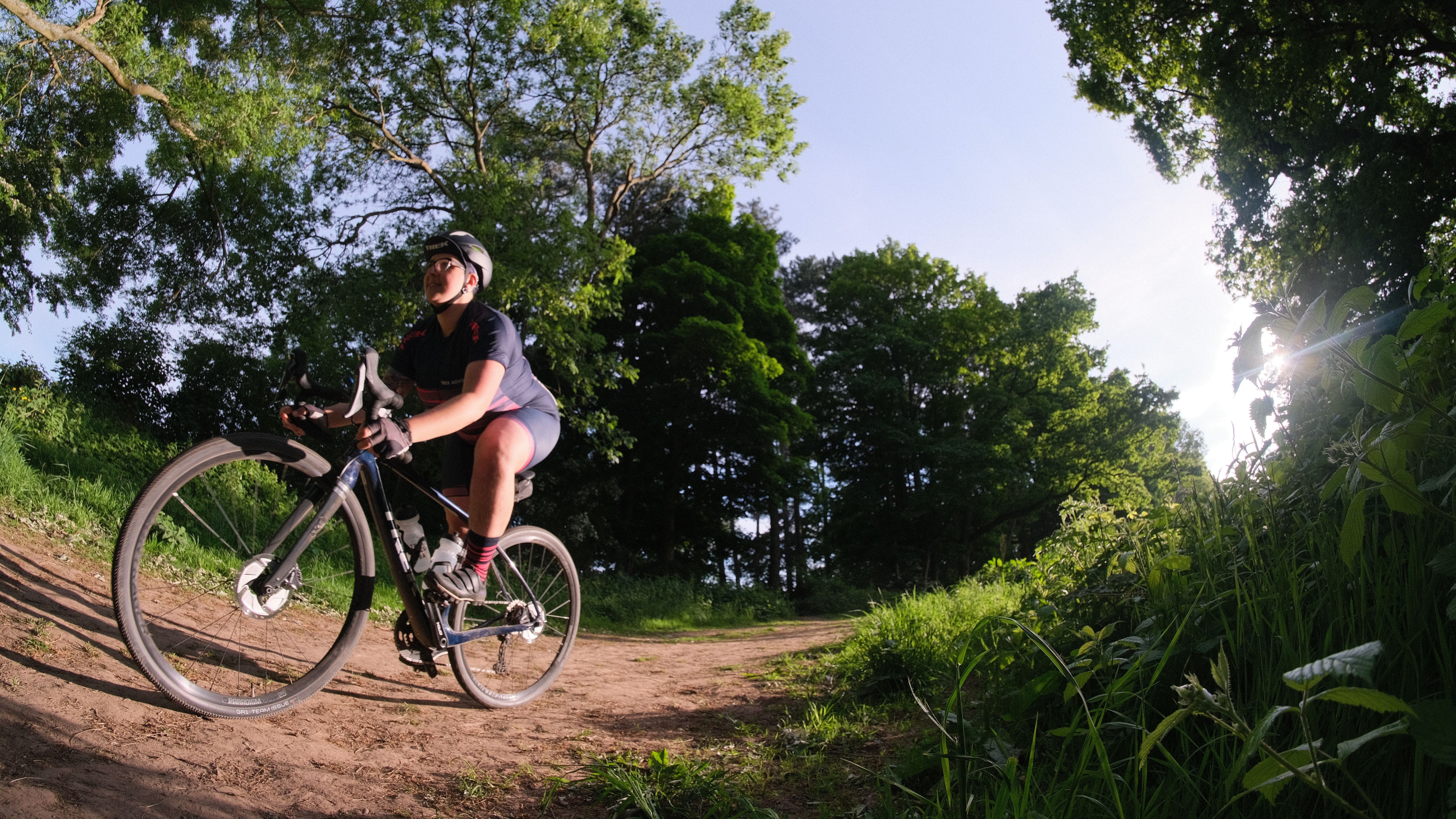
In addition to elite-level road, track and Zwift racing, Zach Nehr is a freelance writer and the head of ZNehr Coaching. He contributes written articles on a variety of cycling-related subjects, including product reviews and advertorials, as well as feature articles and power analyses. With a Bachelor’s Degree in Exercise Science from Marian University-Indianapolis, Zach spends his time working with endurance athletes of all ages and levels at ZNehr Coaching. Having entered the sport at age 17, Zach has had a successful racing career, winning the 2017 Collegiate National Time Trial Championships and a 9th place finish at the 2019 US Pro National Time Trial Championships. These days, Zach spends most of his ride time indoors, racing on RGT Cycling and competing in the Zwift Premier League with NeXT eSport.
